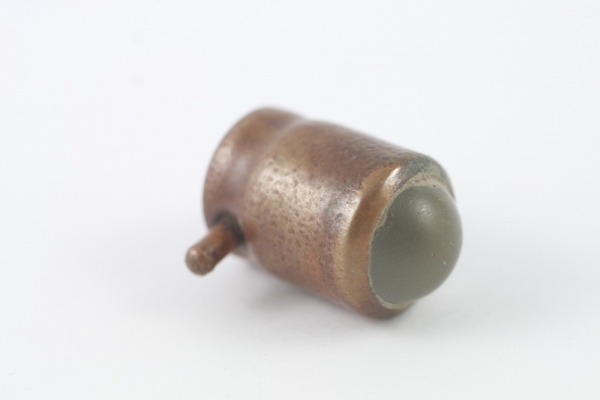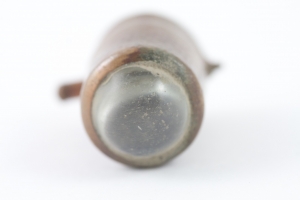
These retroreflective road markings are called cat's eye because they resemble, and were supposedly inspired by, the well-known phenomenon of ‘glowing eyes’ or eyeshine in cats and alligators (which are in fact only reflecting light, not actually glowing). The eye of a cat can be imagined as a lens with a mirror on the back (focal plane). This curved ‘mirror’, a layer of tissue called the tapetum lucidum, causes any incidental light to be refracted inside the eye and reflected back out through the eye in the same direction. In cats this has the effect of doubling the intensity of light inside the eye and improving their night vision, as well as making the eye appear preternaturally shiny to a human observer in a darkened room. To a lesser extent, the same phenomenon occurs in humans and is responsible for ‘red eye’ in flash photography (but less so, because we don’t have this same layer of tissue).
Retroreflection uses the basic principles of specular reflection (like the reflection from a mirror or highly polished surface), refraction (where light changes direction as it passes from one medium to another e.g. air to glass) and total internal reflection (where light hitting the surface of a transparent material at certain angles bounces off the surface rather than passing through it).
In road marking cat’s eyes, this effect is replicated by using glass beads: the refractive index, roundness, transparency and colour of which can impact on how effective they are at retroreflecting. A transparent and round glass bead with fewer inclusions and air bubbles will retroreflect more of the light hitting it, but retroreflectivity can also be improved by coating the back of the sphere in a metal coating to make it mirror-like. When they were first used in the 1920s, these retroreflective spheres were 10-20mm in diameter, but manufacturers have been working on miniaturising these glass beads. In the 1930’s the American company, Potters, made tiny accurate glass spheres only a fraction of a millimetre in diameter which were first used on the cinema’s ‘silver screens’, giving a much brighter image.
In the first experiments that used these miniature beads in traffic signs, the exposed beads lost all reflectivity in heavy rain, as the film of water deflected the light, and dirt collected in the tiny crevices between the beads. Manufacturers like 3M have since made numerous improvements to this design. In cat’s eyes, this problem of the beads getting dirty was solved by the design of their housing: the cast iron base collects rain water and whenever a vehicle runs over the top, the cat’s eyes are pushed down into the rainwater, cleaning the glass beads.
Sample ID: 500
Particularities
- Found
- Found
- Selections
- Categories
- Glass
- Curiosities
- Biomimetic | Optical
- Relationships
- Ball | Beads | Cinema | Coated | Glass | Metallised | Reflective | Refraction | Retroreflective | Road | Safety | Self-cleaning | Sphere
Add materials you find interesting to your own selections.
Use the  button to select a material and get started.
button to select a material and get started.



